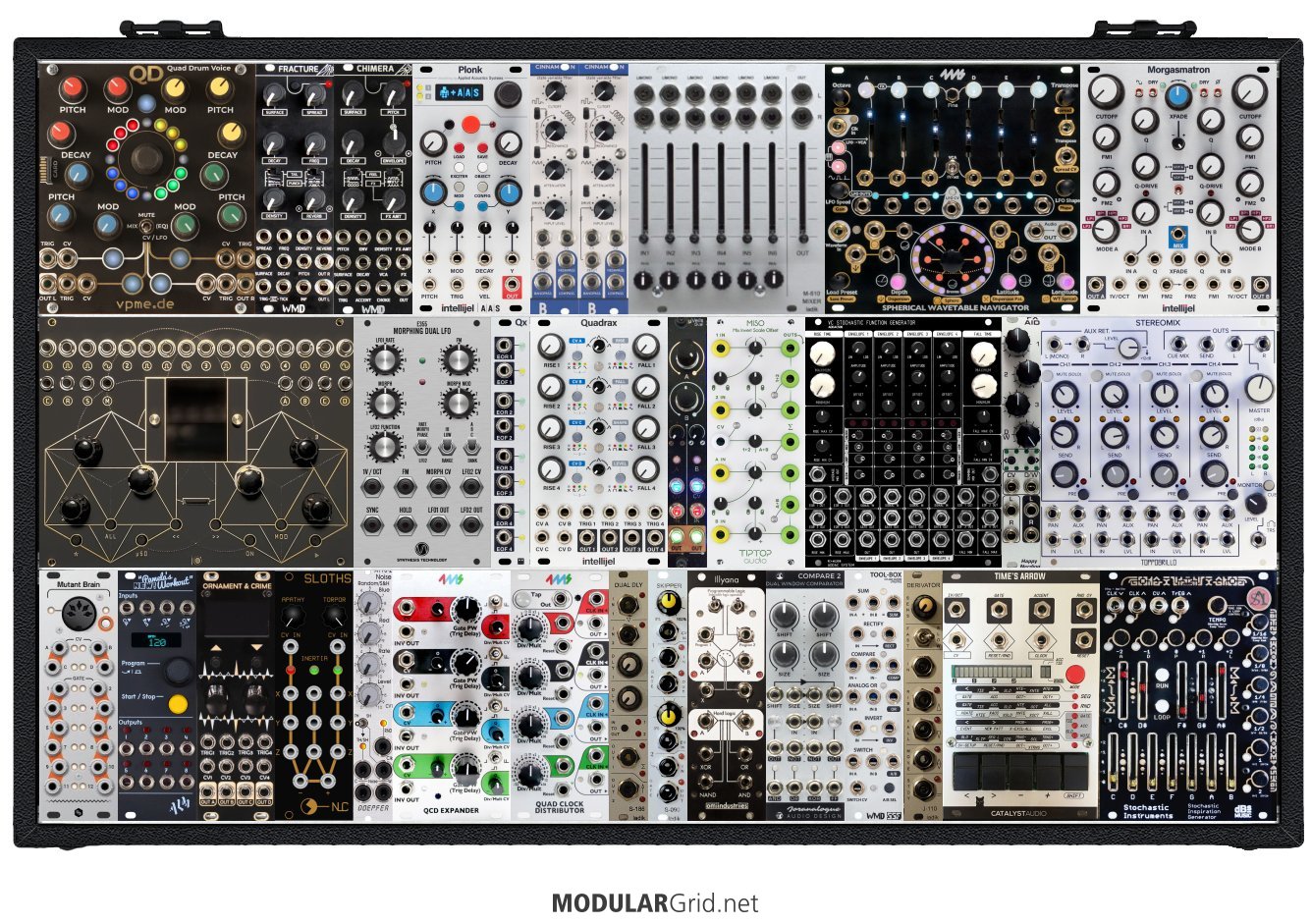OK...I had a bash at this, starting with my recommendation for the cab...in this case, I used a 3-row 126 hp design by Case From Lake that runs roughly $650, powered. The nice thing about Case From Lake is that they can do bespoke alterations to their base-level cabs, so if you need beefier power, more depth, etc etc...they do that.

Woooooo...was this ever NUTS! Normally, I would say that drums don't belong in a build, but in this situation, the requirements all revolve around timing and sequencing, so I knuckled-down and had at it, deleting a number of modules that either made no sense in the build's context or which were better-filled by other modules.
Top row: This is generally "voices" in my builds, and it's that here as well...with some tweaks. All of the original percussive modules are at the left side of the row, and then I added a pair of Bastl state-variables (mainly for the Chimera and Plonk) and a six-in manual stereo mixer to submix the entire percussion complement down to stereo. I didn't bother with VCAs here, because percussion largely doesn't require them. After that, there's the Spherical Wavetable stereo VCO and an Intellijel Morgasmatron...in this case, also without VCAs as the performance mixer below has those.
Middle row: The percussion sequencer is on the left end, conveniently located below the percussion modules. Then the next several modules are all modulation: a Synthesis Technologies Morphing Dual LFO, Intellijel Quadrax + Qx, a dual VCA based on the Veils VCAs, Tiptop's MISO for modulation signal alterations, then ADDAC's Stochastic Function Generator. Since so much of what's in the build depends on a certain degree of stochastics, I figured that this would be a more appropriate substitute for Maths. Then a Happy Nerding FX Aid is located right by the Toppobrillo Stereomix2, which gives you four input channels with VCA over levels, CV panning and AUX send, a headphone preamp (with a CUE function), manual mutes, and an FX send/return path.
Bottom row: Mainly, this is timing and control: Mutant Brain for MIDI, Pam's, O&c, Sloths...then a Doepfer noise/sample and hold module. Then the real clock manipulation starts with the QCD setup, followed by a dual gate delay and a dual probabilistic gate skipper, followed by the Illyana Boolean module. On the other side of this, there's a Joranalogue Dual Window Comparator for picking gate signals off of modulation. Then the Tool Box also has another comparator, along with a number of other useful submodules that all have potential uses in this build. The Ladik Derivator also picks off gates, but this time they're dependent on CV movement. And for CVs, on the right end is a Time's Arrow, a stochastic pattern generator which I've tandemmed here with the Stochastic Inspiration Generator to cause much more complex melodic/harmonic pattern behavior than just the SIG alone.
This is a pretty complicated build. Things that I dropped included the Hexmix, all of the mults (use inline ones...no sense in wasting functional panel space!), the trig-to-MIDI modules, and the multiplexer...mainly because they didn't appear to have any functions that couldn't be filled by changing other modules in the build, or because they simply didn't appear to make sense. So there was a good amount of "streamlining" going on here, even though this result might still look overly-complex. Some others, such as the PEG, were just too big to be sustainable here, plus they also were able to be swapped for similar/identical functions in other modules that made more sense, space-wise. Plus, some things here violate my usual build pattern (most notably, the performance mixer being on the middle row) because...well, space has demands. But this final result is pretty cohesive, partly from dropping some modules, and partly from speccing different modules that could take up the slack for the removed ones. So, it's better...it's COMPLICATED, but yeah...better.

